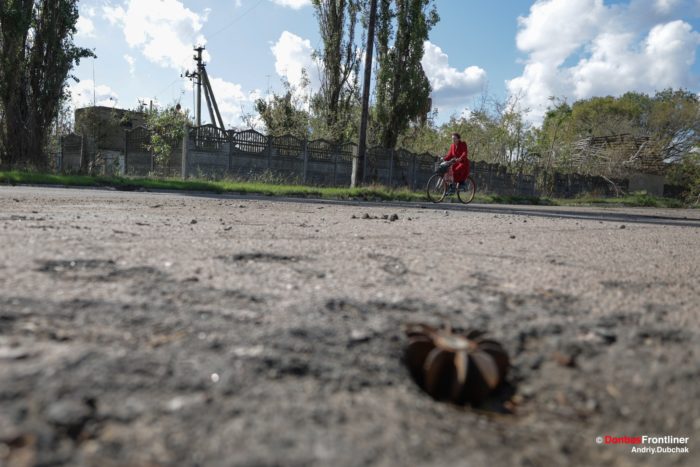The extensive deployment of landmines by Russian forces has significantly impacted the dynamics of the war, causing Ukrainian soldiers to alter their strategies and tactics to navigate this deadly threat, Insider writes.
At the forefront of this issue is the staggering density of the minefields, particularly in some regions where reports suggest Russia has placed up to five mines per square meter. Ukrainian officials have characterized these minefields as "insane," highlighting the unprecedented challenge they pose to the advancing Ukrainian forces.
One disturbing aspect of these minefields is the multi-layered structure implemented by the Russian forces. This tactic involves laying multiple mines on top of each other, creating a formidable barrier that not only hampers mine-clearing efforts but also poses a direct threat to mine-clearing equipment. The complexity of these minefields has forced some Ukrainian soldiers to make the difficult decision to abandon their Western-made tanks and advance on foot to avoid triggering these deadly traps.
The scope of the minefields is unparalleled, with estimates suggesting that Russia has created the largest minefield in the world, stretching along a 750-mile front line. This vast expanse of mines, combined with the strategic placement and utilization of lethal booby traps, has significantly hindered Ukraine's counteroffensive efforts.
Despite being a legacy of 20th-century warfare, landmines continue to play a devastating role due to their affordability, ease of production, and effectiveness. The grim reality is that these seemingly archaic weapons remain a potent and lethal tool on the modern battlefield.
With the shortcomings of vehicles such as the US-manufactured Bradley armored fighting vehicle becoming evident, General Valery Zaluzhny, the Ukrainian commander-in-chief, called for advanced fighter aircraft like the US-produced F-16 to enhance their ground operational effectiveness.
"You can no longer do anything with just a tank with some armor because the minefield is too deep, and sooner or later, it will stop, and then it will be destroyed by concentrated fire," Zaluzhny told The Washington Post.
Four main types of landmines Russia uses and their impact
The impact of these landmines is not confined to a single type. Four main categories of landmines have been identified by the Insider: blast mines, bounding mines, fragmentation mines, and anti-tank blast mines. Each type inflicts varying degrees of harm on both human lives and military equipment.
Blast Mines:
- Common type designed to cause injuries or fatalities to enemy soldiers.
- Buried a few inches below ground and activated by pressure plates.
- HRW identified PMN-2 and PMN-4 blast mines in Ukraine.
- PMN-2 described as circular, plastic-cased mine; Ukraine disposed of its stock in 2003.
Bounding Mines:
- Activated by tripwires or pressure triggers.
- Igniter lifts mine about three feet into the air upon activation.
- Inflicts injuries to victim's upper body.
- Used as anti-personnel devices.
Fragmentation Mines:
- Can be bounding or ground mines.
- Explode, sending glass or metal shrapnel in various directions.
- Injuries can extend up to 660 feet away.
- OZM-72 "bounding fragmentation" mines found in Ukraine.
Anti-Tank Blast Mines:
- Larger versions designed to damage tanks by destroying tracks and piercing armor.
- Pressure activated, requiring significant force to trigger.
- PTM-1 and TM-62M are examples, dropped from helicopters or placed manually.
Dense minefields force Ukraine to change counteroffensive strategy – WP


